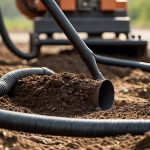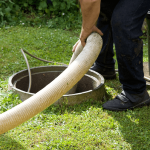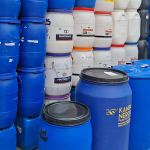Beyond the Bottle: The Lifecycle of Your Chemical Solvent Disposal
Chemical solvent disposal play a crucial role in industries such as manufacturing, automotive services, laboratories, and agriculture. However, when these solvents are no longer useful, their disposal becomes a significant responsibility. Ensuring their safe and compliant handling is essential to protect both the environment and community health. At Clarence Valley Septics, our chemical solvent disposal process is designed to offer transparency, responsibility, and sustainability throughout the chemical waste lifecycle.
Collection and Safe Transport for Chemical Solvent Disposal
The first step in the chemical waste lifecycle begins when the chemical waste is collected from the source. At Clarence Valley Septics we use licensed vehicles equipped to handle various types of hazardous waste. Our team follows strict transport regulations under Australian environmental guidelines, ensuring every load is properly labelled, contained, and documented.
During transportation, risks such as leakage, contamination, or exposure are mitigated through compliance with the Australian Dangerous Goods Code. These measures not only ensure public and worker safety but also reinforce our commitment to environmentally responsible chemical waste disposal. The journey from your site to the processing facility is a vital link in the lifecycle, where our knowledge plays a key role in efficient and safe operations.
Receiving and Initial Assessment
Once the chemical waste arrives at an authorised treatment facility, it undergoes an initial assessment. This process includes identifying the type of waste, evaluating its composition, and determining its potential hazards. Classification is essential, as it influences the next stages of treatment or recycling.
The chemical waste lifecycle relies on this assessment to distinguish between recoverable waste and those requiring neutralisation. By maintaining a detailed record of each batch, Clarence Valley Septics ensures regulatory compliance and traceability. This transparency builds trust with our clients, providing assurance that their chemicals are managed with professionalism and care.
Treatment and Neutralisation
After assessment, the chemicals are directed to appropriate treatment streams. Some chemicals, especially those that are highly reactive or contaminated, must be neutralised. This stage may involve treatment that renders hazardous components inert or less harmful. For instance, acidic solvents may be treated with alkaline substances to bring the pH to safe levels.
Neutralisation is a critical phase in the chemical waste lifecycle. It transforms dangerous materials into forms that pose less risk to people and the environment. The processing follows prescribed methods and safety protocols, with a focus on minimising environmental impact. Throughout this phase, the by-products of treatment are properly contained and disposed of, further reflecting a dedication to responsible chemical disposal practices.
Solvent Recycling: Giving Waste a Second Life
Not all chemical waste must be discarded. In many cases, solvents can be recovered and reused through a process known as solvent recycling. This involves distillation or filtration techniques that separate usable solvent from contaminants. Recovered solvents may be reintroduced into industrial processes, reducing the demand for virgin chemical production.
This approach supports a circular economy model and reduces the volume of waste needing permanent disposal. Recycling is a key part of the chemical waste lifecycle, helping businesses meet sustainability goals and decrease environmental impact. Moreover, by diverting solvents from incineration or landfill, we help protect the unique ecosystems of the Clarence Valley region.
Regulatory Compliance and Environmental Responsibility
Every stage of the chemical disposal process must comply with local and national environmental regulations. Clarence Valley Septics is fully licensed and operates under NSW Environment Protection Authority (EPA) guidelines. Our processes are designed to exceed the minimum legal requirements, ensuring that each stage of the chemical waste lifecycle upholds both safety and sustainability.
Documentation and reporting are part of our commitment to transparency. Our clients receive waste tracking documents that confirm the type, quantity, and destination of their disposed chemicals. These records are not only essential for compliance but also provide peace of mind that the waste is being managed responsibly.
Operating within the Clarence Valley gives us a strong understanding of the local environmental challenges. Our practices are shaped by the needs of our community and the importance of preserving our shared natural resources. Whether through improved disposal methods or increased use of recycling, our goal is to continually advance environmental protection.
More Than Just Disposal
The chemical waste lifecycle is far more complex than basic collection and disposal. From safe transport to final treatment or recycling, each step carries environmental and ethical responsibilities. At Clarence Valley Septics, we understand the importance of managing chemical waste with a long-term view. Our clients trust us not just for our technical capabilities, but also for our commitment to environmentally sound solutions.
By approaching each task with transparency, compliance, and care, we contribute to a cleaner Clarence Valley and a safer future for all.
Partner with a Responsible Waste Management Team
If your business generates chemical waste or other types of hazardous waste, don’t leave fate to chance. Partner with Clarence Valley Septics for trusted chemical waste services that prioritise safety, compliance, and sustainability at every stage of the waste lifecycle.
To learn more about how we can support your waste management needs contact our team today.


